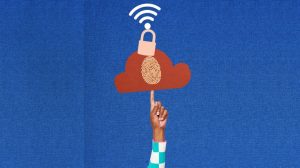From a young age, most are taught electricity and water don’t mix. While there is certainly truth to this statement, there are some exceptions. At Rathbun Lake in southern Iowa, engineers and scientists are working to design a one-of-a-kind electric barrier to deter fish from escaping downstream of the reservoir—all happening under water.
The Kansas City District, U.S. Army Corps of Engineers operates and maintains the dam and reservoir at Rathbun Lake, but the Iowa Department of Natural Resources maintains the fish hatchery and fish population found there. Together, along with partners from Iowa State University and the private sector, USACE and the Iowa DNR are hard at work to make the seemingly impossible happen—create a safe, effective underwater electric fish barrier to keep walleye in the reservoir.
Not only does the walleye population at Rathbun Lake attract anglers from across the country, but it also provides valuable research opportunities for the state. According to Phil Brown, operations project manager at Rathbun and Long Branch lakes with the Kansas City District, the state introduced walleye to Rathbun Lake in the 1980s for research purposes.
“The fisheries biologists at that time wanted to introduce walleye to the reservoir. They wanted to start doing walleye research and expand their capabilities from a research institute,” said Brown. “It’s millions of dollars of economic benefits [for the local community] associated with the walleye fishery, people coming to fish for walleye at this reservoir and what’s associated with it.”
Although introducing walleye at Rathbun Lake has had many benefits, it’s proved challenging to keep the fish in the reservoir. This is because walleye are stimulated by moving water when they spawn, which occurs in the spring and early summer—the same time the lake releases water from spring rains and upstream winter snowmelt. According to Brown, this has led to significant portions of the walleye population ending up downstream of the reservoir.
“We lose a significant amount of the walleye population,” he said. “They go downstream of the dam and once they go downstream, you can’t get them back.”
After years of research and formal studies, the team found the most effective solution—in functionality and cost—to be an intermittent underwater electric current.
“It’s similar to using an electric fence in the terrestrial environment. The fish, when they are subject to an electric current underwater, depending on the strength and the type of electric current, they’ll have different responses. But if you get it just right, they will be deterred and won’t move through the electric field that is created,” said Leigh Mitchell, electric fish barrier project manager with the Kansas City District.
An underwater electric fish barrier has only been done once in the history of USACE but never in a reservoir. So, the team of engineering and scientific specialists began designing the innovative project. Facing many ‘firsts’ during the conceptual design phase, one thing was certain from the very beginning: it had to be a solution that would not disrupt the operations and safety of the dam and outlet structures, and most importantly, the safety of staff and recreators at the lake.
“Rathbun Lake is providing a critical benefit and role here for this area—flood control, water supply—we do not want to interrupt that service it’s providing, especially not in a way that could be critical to its ongoing function,” said Mitchell. “[We’ve got] to make sure we’ve got a system that serves its purpose … but doesn’t negatively impact dam safety or people safety.”
Due to the complexity of designing a safe and effective, one-of-a-kind underwater electric fish barrier for a reservoir, the project is still in the initial design phase. But the team’s excitement for the innovative project is palpable, almost like an electric current—similar to the one they are designing and hope to implement.
“No one’s ever tried to reduce fish escapement with an electric barrier in this type of situation before or this type of setting. It’s the first time we know of that this has ever been attempted,” said Mitchell. “It’s a very unique project and at the very least, we have learned a lot about what is and isn’t possible.”
| Date Taken: | 01.17.2025 |
| Date Posted: | 01.17.2025 11:22 |
| Story ID: | 489264 |
| Location: | MISSOURI, US |
| Web Views: | 6 |
| Downloads: | 0 |
PUBLIC DOMAIN

This work, It’s electric! One-of-a-kind fish barrier project aims to preserve walleye population, by Christine Paul, identified by DVIDS, must comply with the restrictions shown on https://www.dvidshub.net/about/copyright.





